The Japanese Pilgrimage Where Horimono Tattoos Are Revered
November 17, 2020Matsuda Takahiro runs a restaurant on the outskirts of Tokyo. He serves food that goes well with a few cold mugs of beer, and outwardly there isn’t much that separates Matsuda or his restaurant with others in his neighborhood. Beneath his clothes, however, he is covered with a traditional Japanese tattoo known as a horimono.
“People don’t understand,” explains Matsuda. “They think it’s intended to be threatening to others. But that’s not what a horimono is. That’s not why people get them,” he says. “We do it for ourselves.”
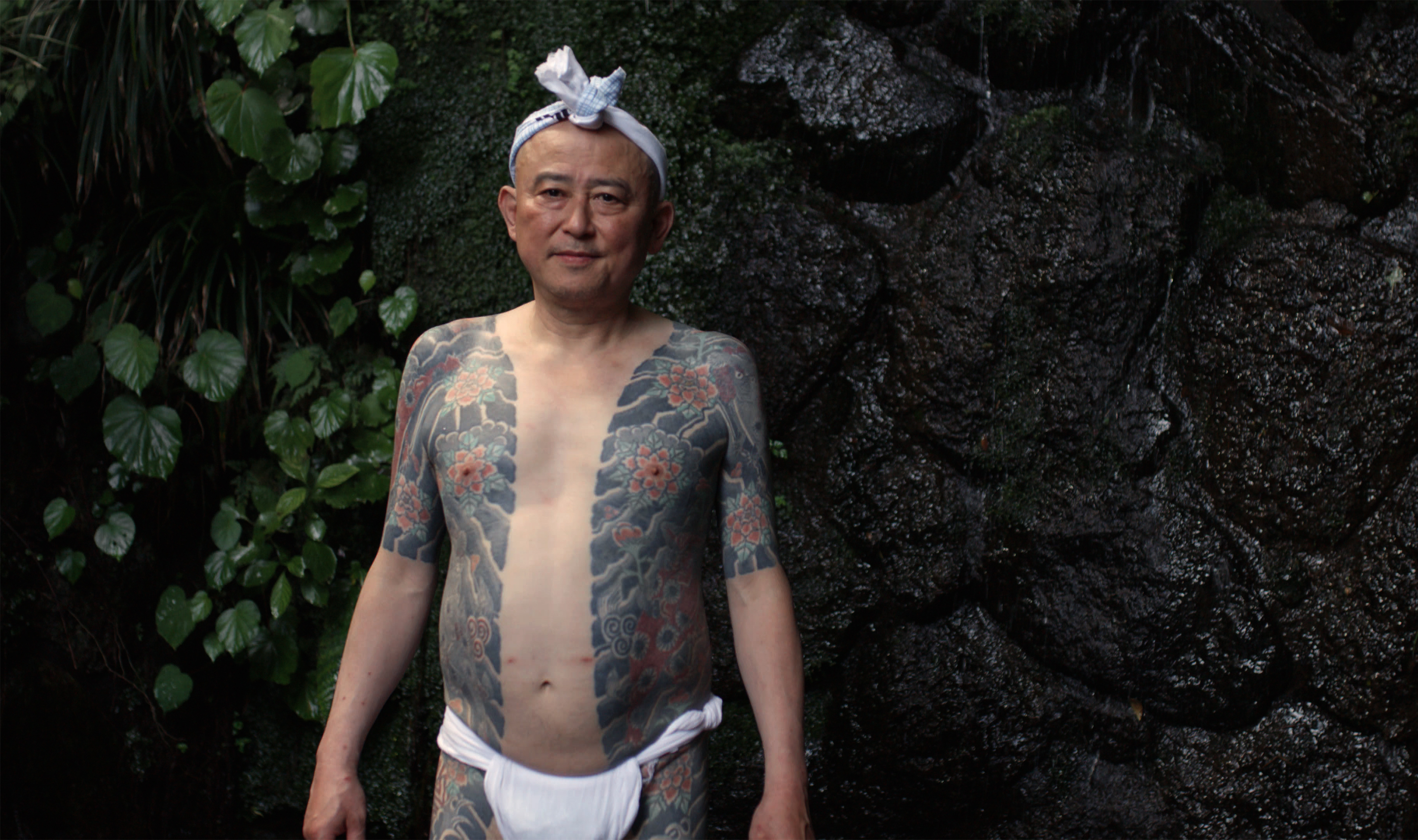
A horimono is a full-body tattoo with a single, unified design that begins on the back and extends down one’s legs, shoulders and chest. Though not exactly interchangeable, other words that are commonly used to refer to this style of art are tebori, which means hand-carved; and wabori, which refers to Japanese-style tattoos in general.
The tattoos are hand-poked with needles attached to wooden instruments and traditional Japanese ink. Although the sound of the needle digging in and out of one’s skin might draw memories of something being carved, the name horimono, meaning “something that is carved,” comes from the fact that this style of tattooing evolved directly from traditional Japanese woodblock prints, ukiyo-e.
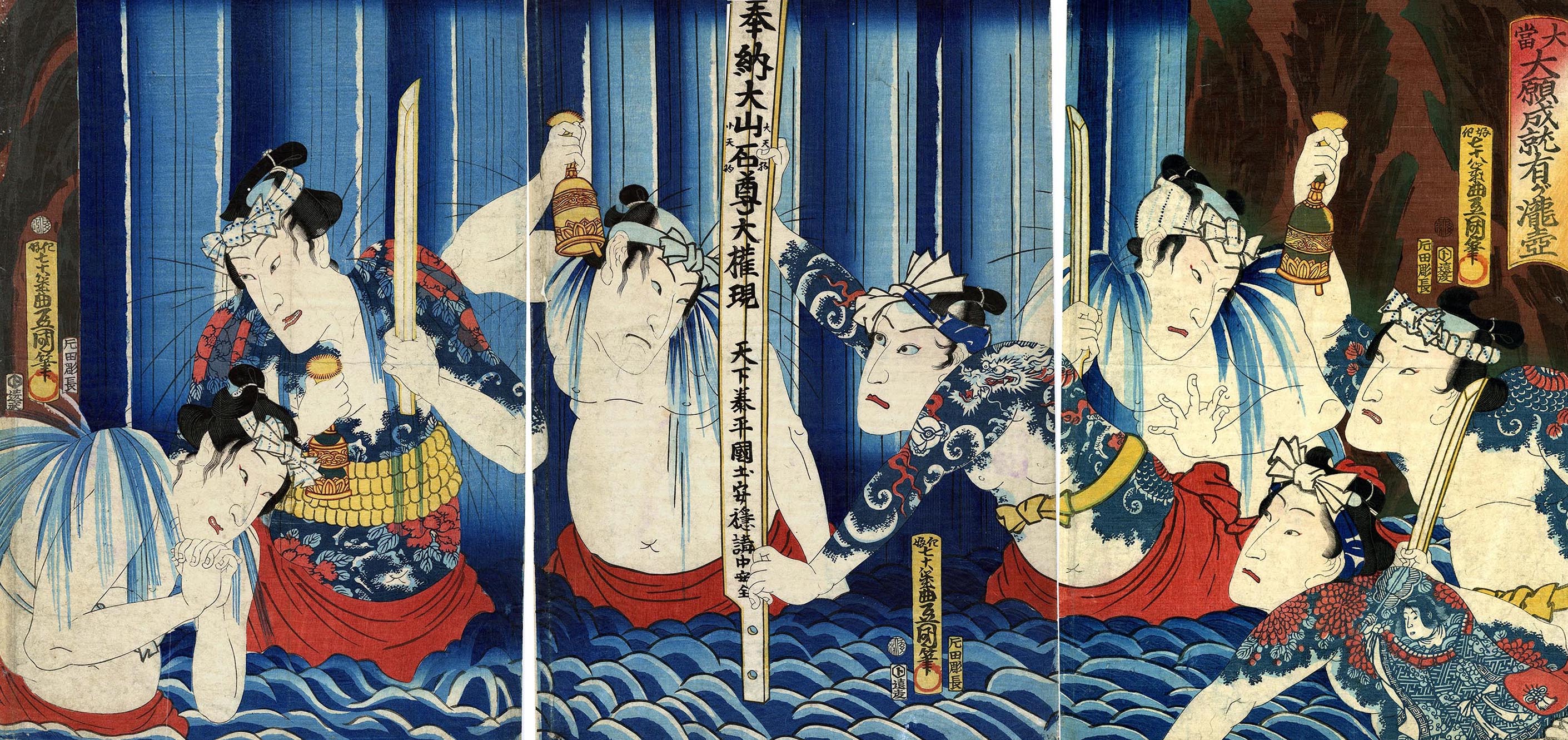
These sorts of tattoos were often picked up by Japanese firemen and working class physical laborers who would tattoo scenes from traditional Japanese folktales and Buddhist mantras into their skin that would protect them from their dangerous work hazards.
Today, horimono tattoos continue to have deep significance for those who carry them on their bodies.
"I have to live up to what I have carved on my back. It's not exactly spiritual, but I want to be honorable because I have this horimono," Matsuda said.
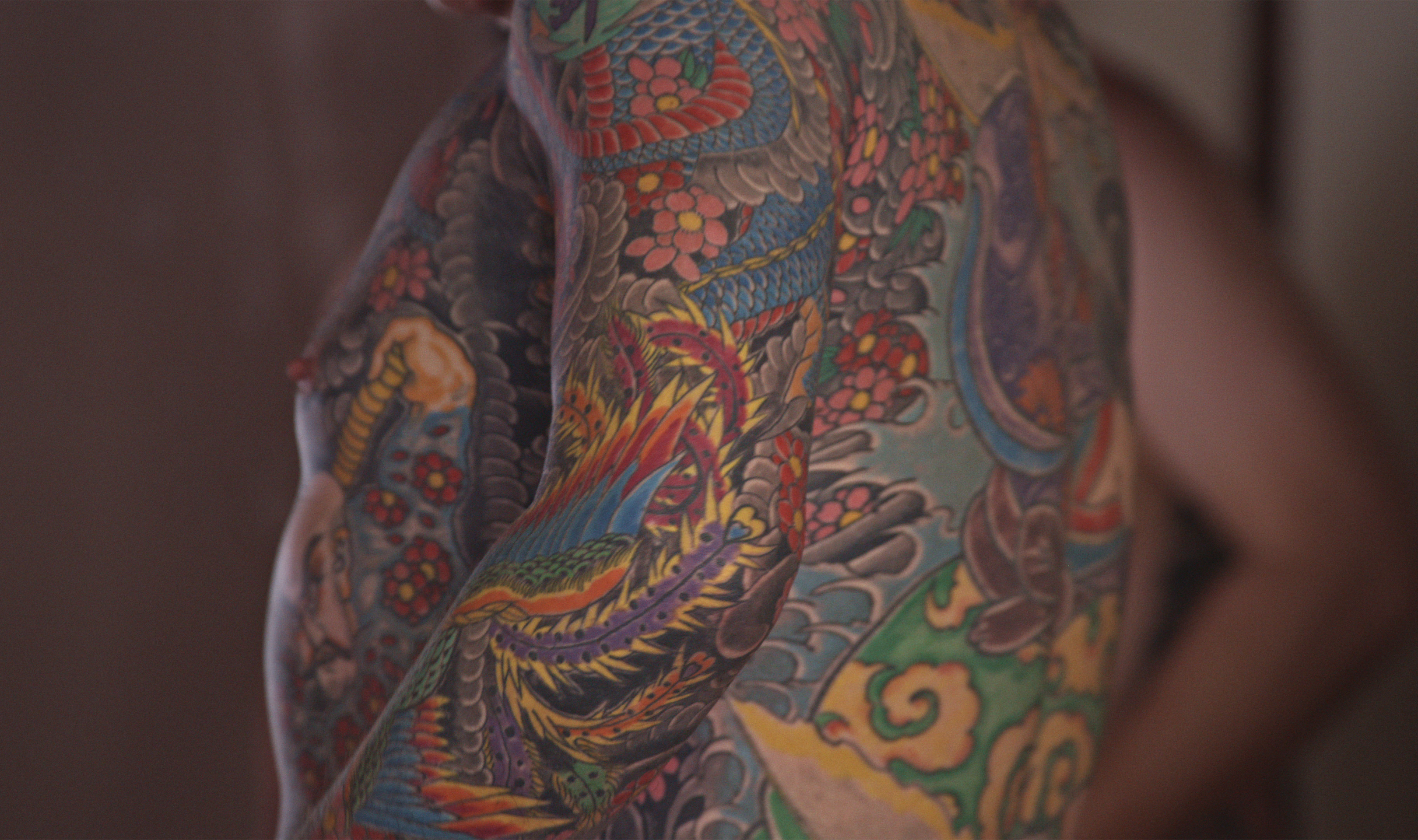
The Choyukai
Over 100 years ago, a pilgrimage group known as the Choyukai was formed. The Choyukai were united by one similarity: their bodies were covered with traditional full-body horimono tattoos, all done by a famous tattoo artist known as Horiuno. Today, Matsuda is the deputy chairman of this group.
Like most of the senior members of the group, he bears a tattoo done by the last in the storied artist’s line, Horiuno III.
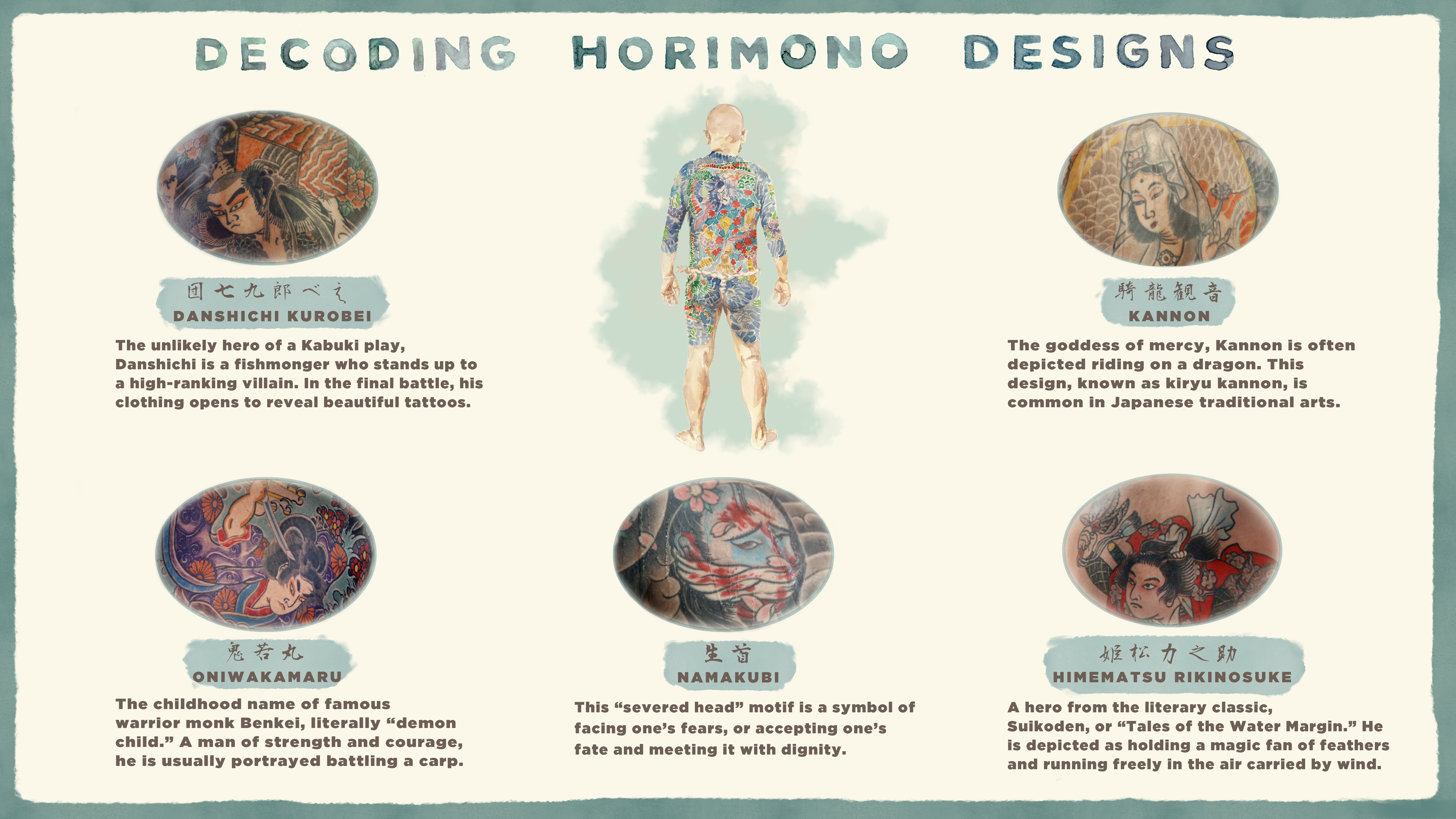
The scenes depicted in Japanese horimono tattoos are works of art worthy of being displayed in the world’s finest art museums. These days in Japan, however, this form of art and the people who have them are reviled. Those with Japanese horimono tattoos are automatically assumed to be members of yakuza, or characterized as hanshakaiteki seiryoku –or groups against society.
These stereotypes are often reinforced by media outlets that inadvertently push oversimplifications of the truth. One word that is mistakenly thrown around both in Japan and abroad for the horimono style is irezumi.
In the 1700’s, irezumi were given forcefully as punishments, using simple crosses or lines on arms or foreheads, marking criminals for everyone to see. Horimono, on the other hand, are bright, colorful pieces that use the entire body as a canvas – they are never standalone pieces as criminal irezumi were, or as traditional western tattoos are today.
They often depict gods or characters embodying ideals that people believe in – things that they want to become.
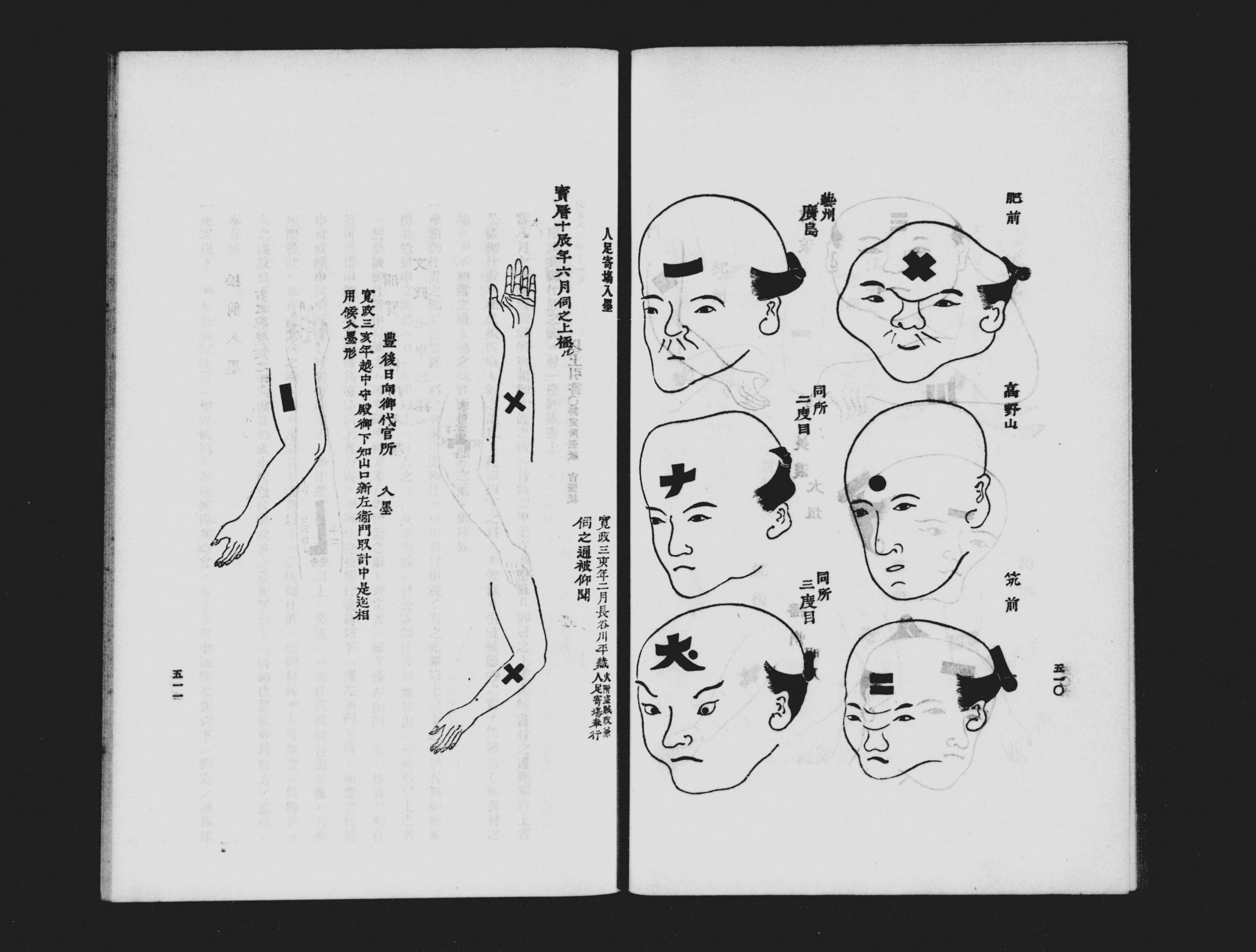
The idea that having a horimono is something that immediately identifies someone as yakuza is something that horimono tattooed individuals scoff at – not just because of the stigma, but the sheer cost of obtaining these tattoos.
“Horimono can cost millions of yen (tens of thousands of dollars) and the salary of yakuza is very low. Aside from top bosses, the thought that every yakuza could afford to put one in their body is laughable,” explains Matsuda.
Members of the Choyukai are not yakuza and there is a rule in place prohibiting them from being members of organized crime groups. By and large, anybody who seemed to have a connection with crime regarded this as something they only flirted with in their youth. Members come from a wide range of backgrounds and professions.
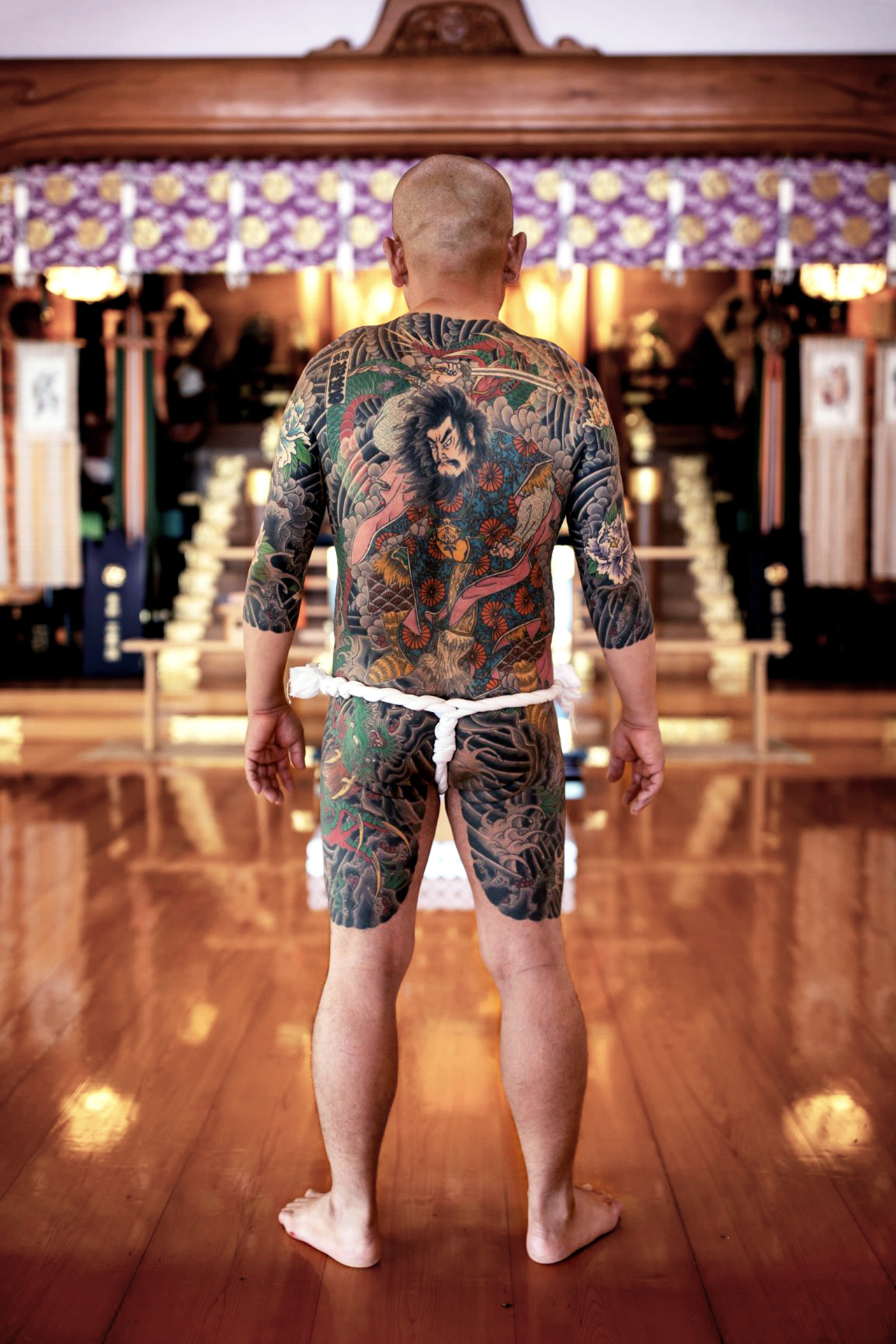
Back in their working lives, members of the Choyukai and other tattooed individuals have to keep their tattoos a secret, hidden under their clothing. Revealing the tattoos in public could mean the loss of one’s job or becoming an outcast in the communities where they live. A court case was filed just this month in Japan by a 20-year old man who was fired from a luxury Tokyo sushi restaurant over a rumor that he had a tattoo. Whether or not he even has a tattoo is unknown.
The lack of ability to show tattoos to the general public in Japan actually does not appear to bother many with horimono, however. Rather than something to show off to others, a horimono represents one’s personal aspirations and ideals to live up to.
“I don’t need society’s approval,” said Matsuda. “I don’t care if people understand or they don’t.”

The history of horimono
Government officials eventually banned horimono altogether. With a newly centralized government and its attempts to bring its populace under control, there was a top-down attempt in the late 1800’s to suppress members of the working class, who were seen as ostentatious with their tattoos and spending above their socioeconomic stations.
Horimono were widespread in these days, and regarded as something to be proud of. But efforts to suppress tattoos drove the practice underground, giving them an outlaw image that perhaps heightened their appeal to some.
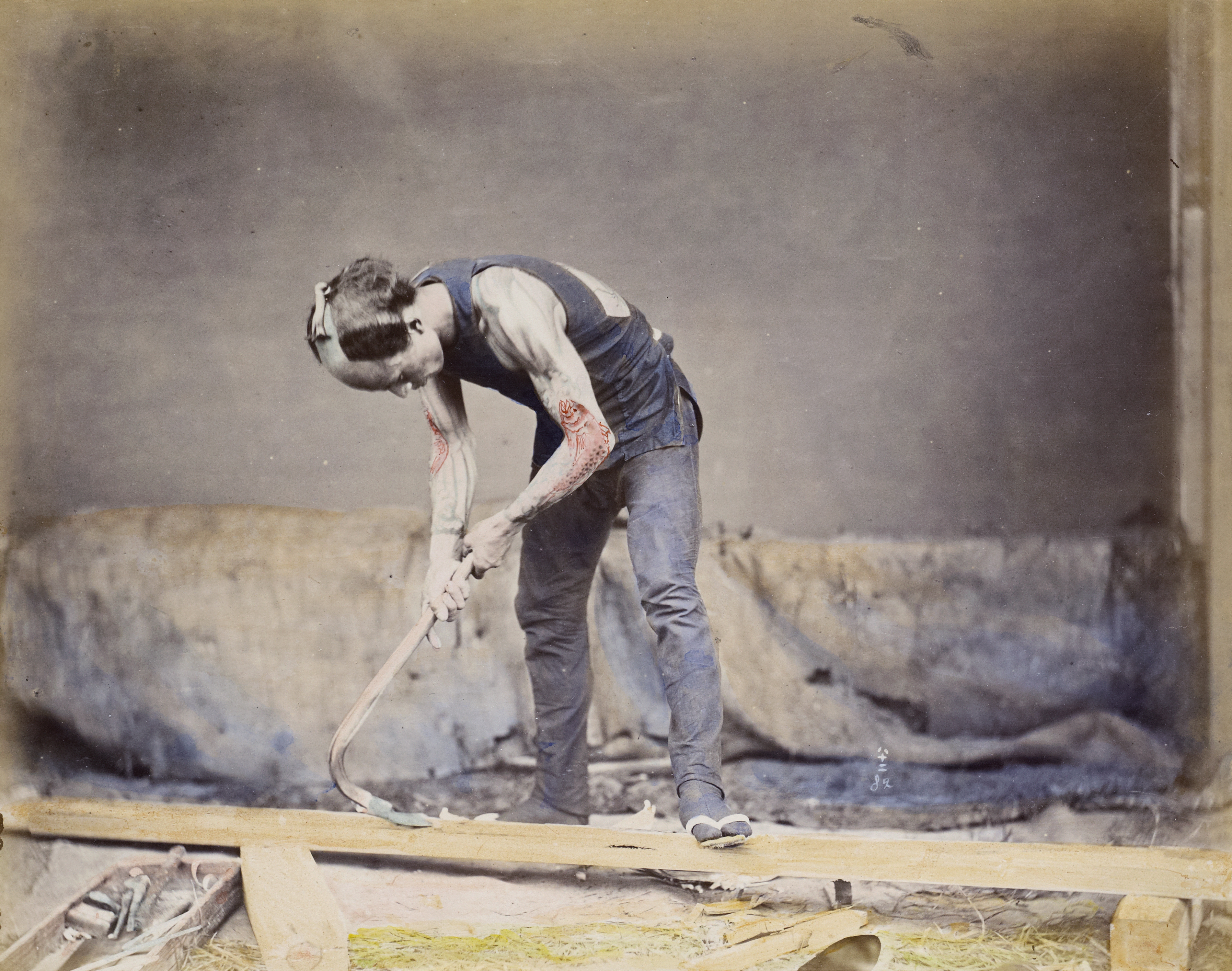
Another reason for the ban was that, in an age where Japan was opening up to the world after 200 years of being insular, it was thought that this art form would be offensive to foreign tourists and dignitaries. There is evidence that both foreign tourists and dignitaries alike were fascinated by this art form, however. Postcards of people inked with horimono were a popular gift for tourists at the time, and both Prince George (later to become King George V, who reigned from 1910 to 1936) – and his brother, Prince Albert Victor, received dragon and tiger tattoos in Japan in 1881.
Though not apparent with current discrimination, the legal ban on tattoos was lifted in the 1950’s by American Occupying Forces — ironically because the foreigners that were supposed to be afraid of tattoos wanted to get them for themselves. But the stigma has remained strong.
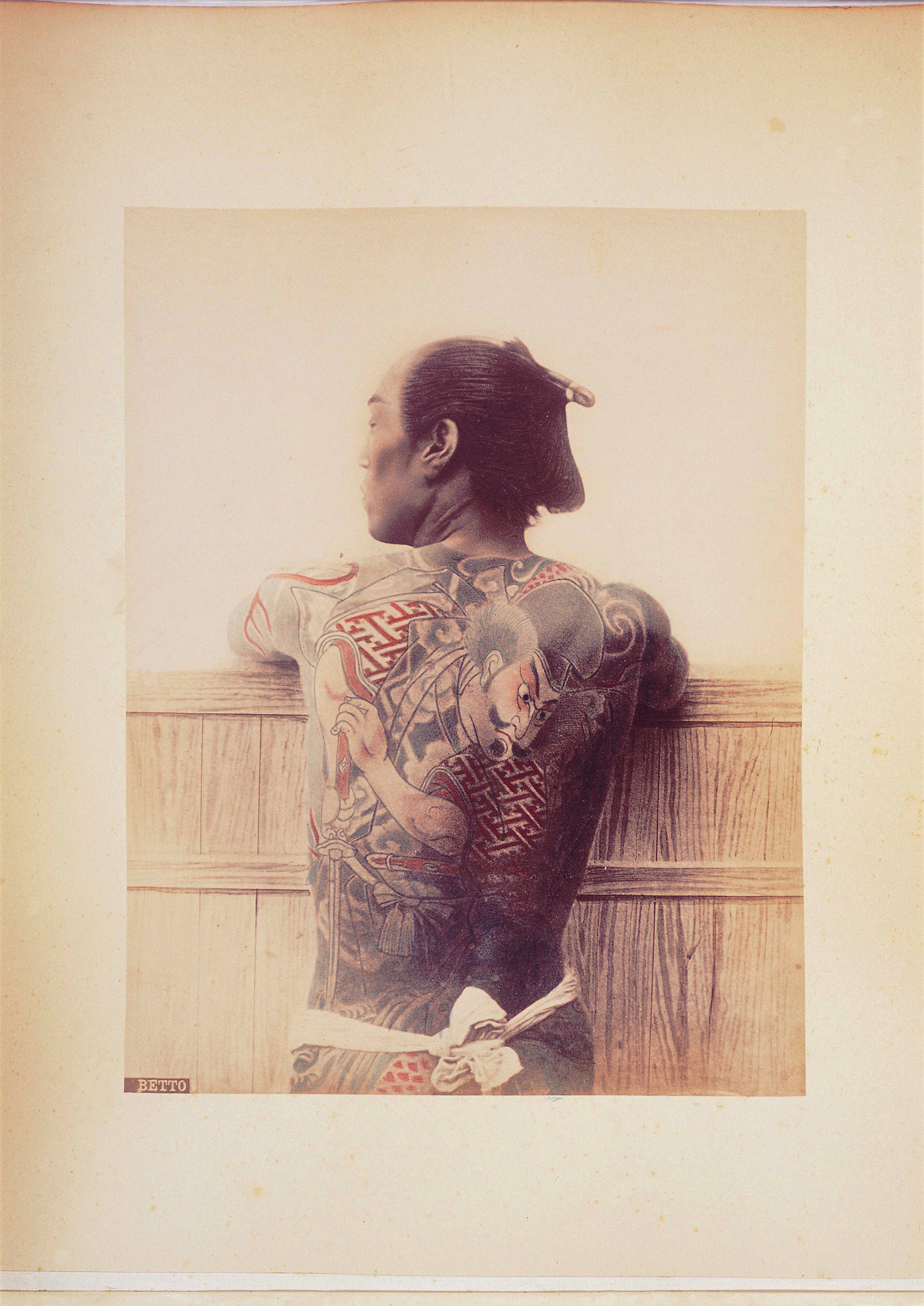
“When I was a kid there were many people in my neighborhood who had horimono,” recalled the Choyukai’s sendōshi, or official pilgrimage guide, Satoh Takeshi. “It was completely normal to see a man with tattoos come to the bath after a long day of work. Nobody would care.”
Until about the 1960s, bathing was a public experience in Japan, as most homes in Japan were not equipped with their own baths and showers. As plumbing systems became more widespread and more people gained the abilities to clean up at home, public bathing began to decline. With this advancement came the loss of one of the only chances for those without tattoos to have actual exposure to working class people with tattoos.
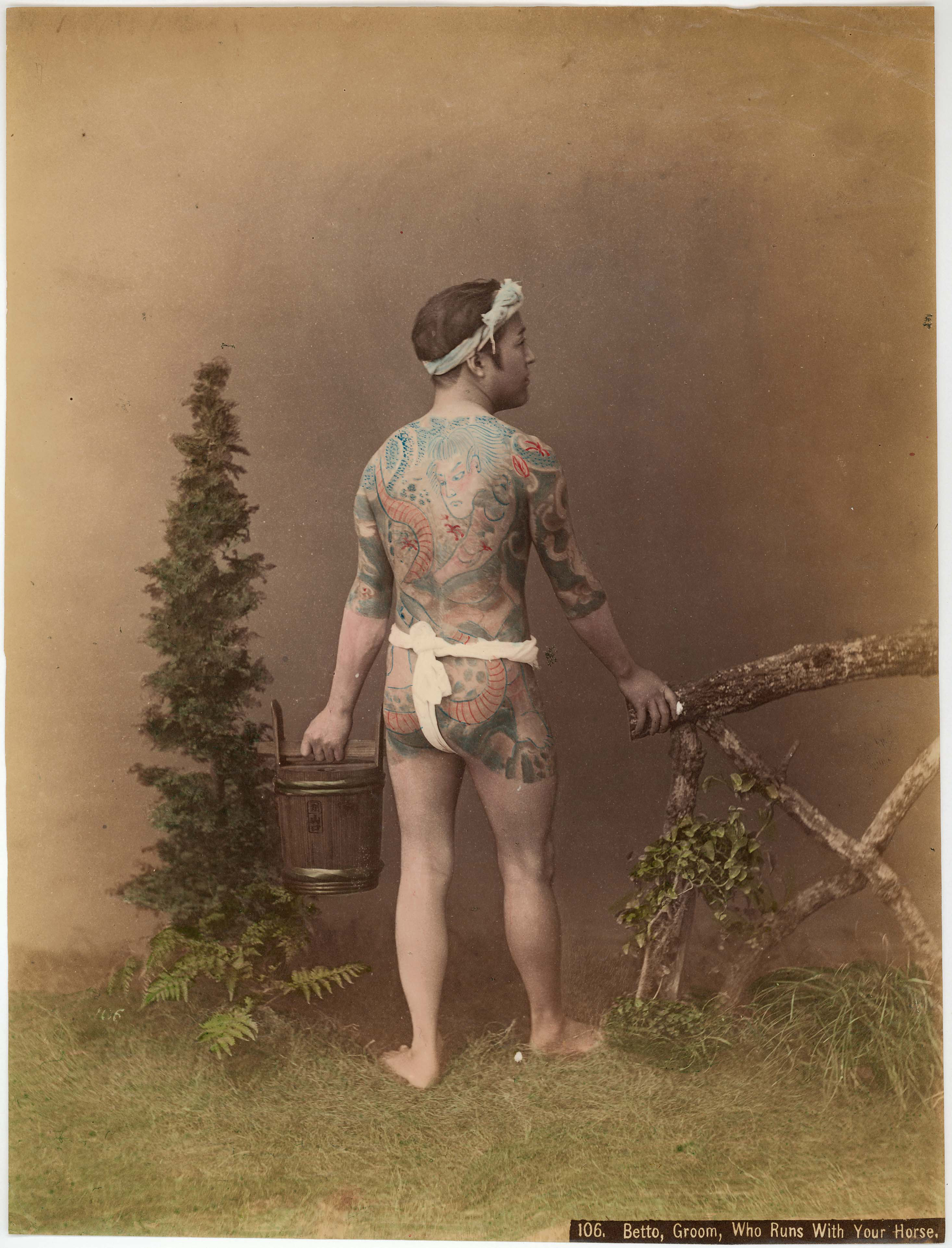
This loss of this direct exposure to naked neighbors with tattoos coincided with the post-war boom of the Japanese film industry, and also with that of a new film genre: yakuza films, also known as ninkyō eiga, or chivalry films.
“With influences from movies, horimono and tattoos became associated with yakuza or gangsters. But when I was a kid there was no such association. It all began with the yakuza movies,” explained Satoh.
The protagonists of these films were often tattooed outlaws who led lives of crime, but were guided by a sense of honor and chivalry with roots tracing back to the bushido culture of the samurai. Real-life gangsters gravitated towards horimono because of their thematic connections with honor and traditional Japanese culture. Life began to imitate art and art began to imitate life, and in the mix of this echo chamber, onsen bathhouses, public gyms, swimming pools, and other establishments in the real world began putting signs up to ban people with tattoos from entering.
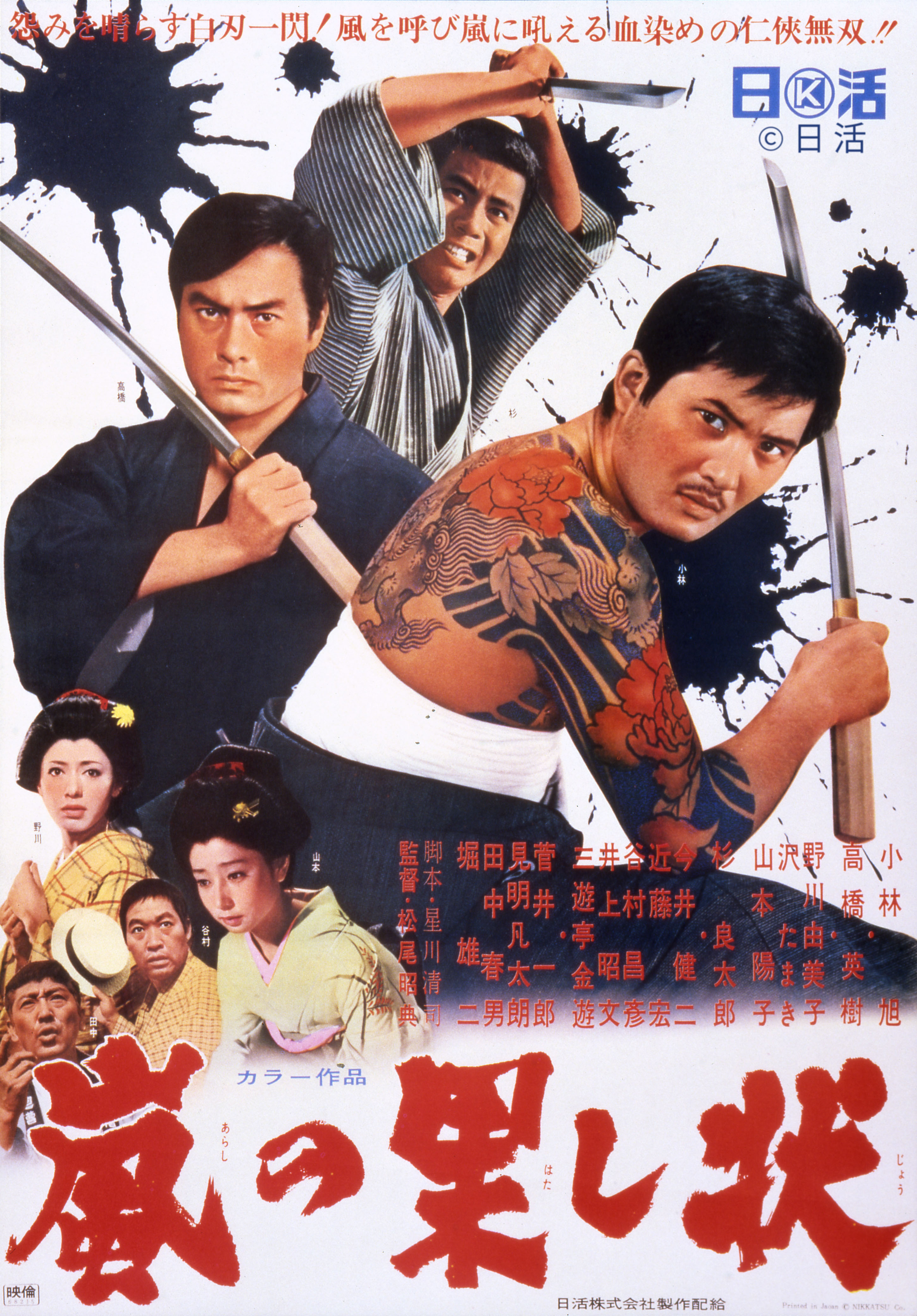
These bans and these signs still exist today, even for foreign tourists with tattoos of Marvel characters or names of their high school lovers. If a tattoo is plainly visible on a guest who wants to enter a bathhouse or a gym in Japan where they are banned, they will be asked to cover it up with a large bandage, so that it will not offend or scare other people.
In an obvious attempt to keep tattoos out of mainstream society despite the lifting of the tattoo ban, for years Japanese tattoo artists were forced to obtain medical licenses in order to perform their art for years. This was only recently overturned in a supreme court case.
Pilgrimage
Despite the many decades of pushback, misguided fear, and government control the Choyukai pilgrimage group stands strong. They represent a cultural, historical, and living community that acts as a testament to how deeply rooted horimono tattoos are in Japanese society.
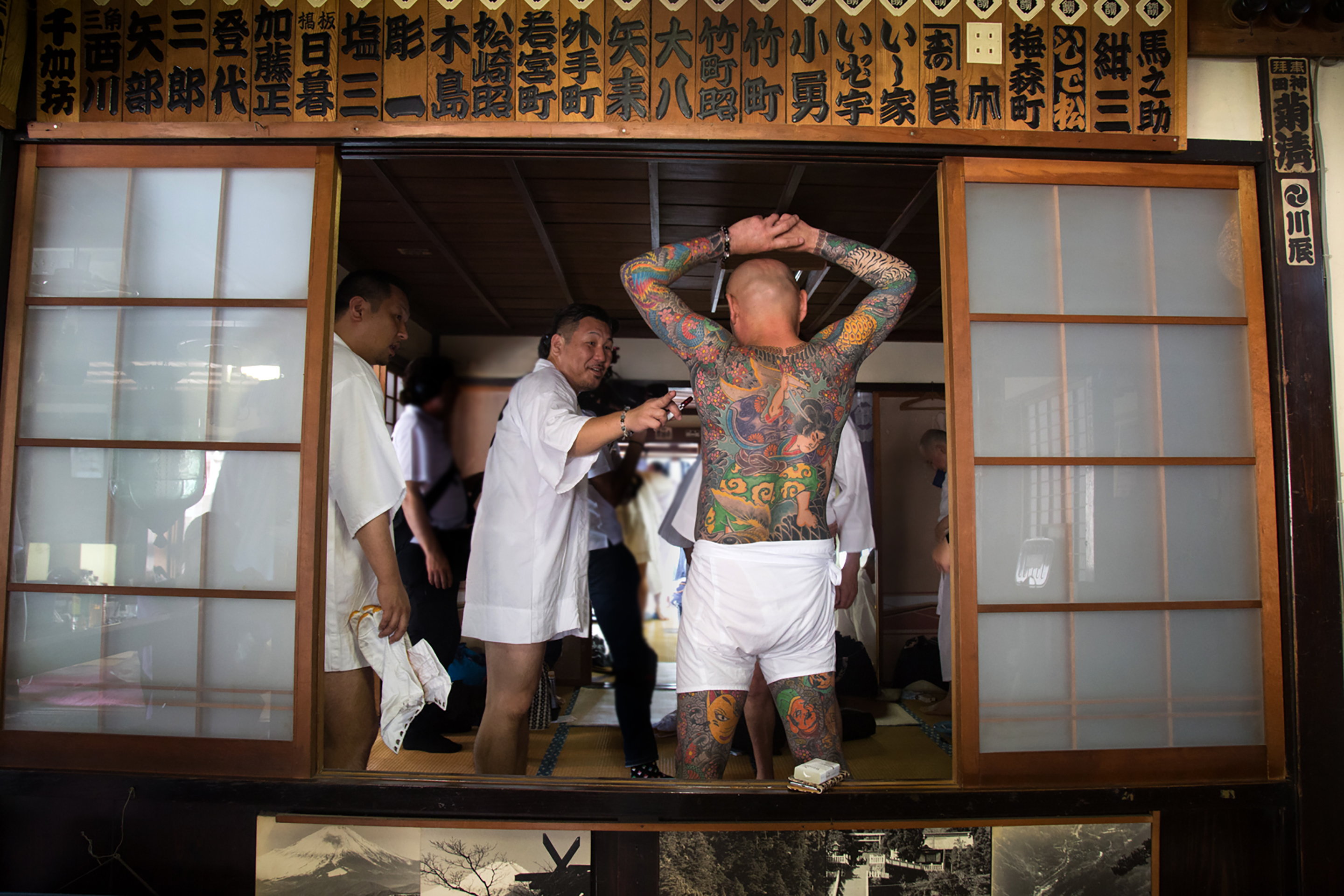
Pilgrimage culture in Japan has existed for centuries and began in an age without cars or trains, where it would sometimes take days or weeks to reach one’s goal. They were performed in pilgrimage groups called kō, among those who had a similar bond with one another, either through the region where they lived or through their professions. There were firemen kō, fishermen kō, kabuki actor kō, sumo wrestler kō – practically every type of kō to serve varied groups. This tradition continues today.
These groups set out to destinations like Mt. Fuji, Ise shrine, and Mt. Oyama from all over Japan. An industry of pilgrimage guides or sendōshi, travelers inns, street markets, and performance artists, and nighttime entertainment popped up along the way to transform pilgrimages into epic journeys that in some ways probably made their purification pilgrimages all the more necessary.
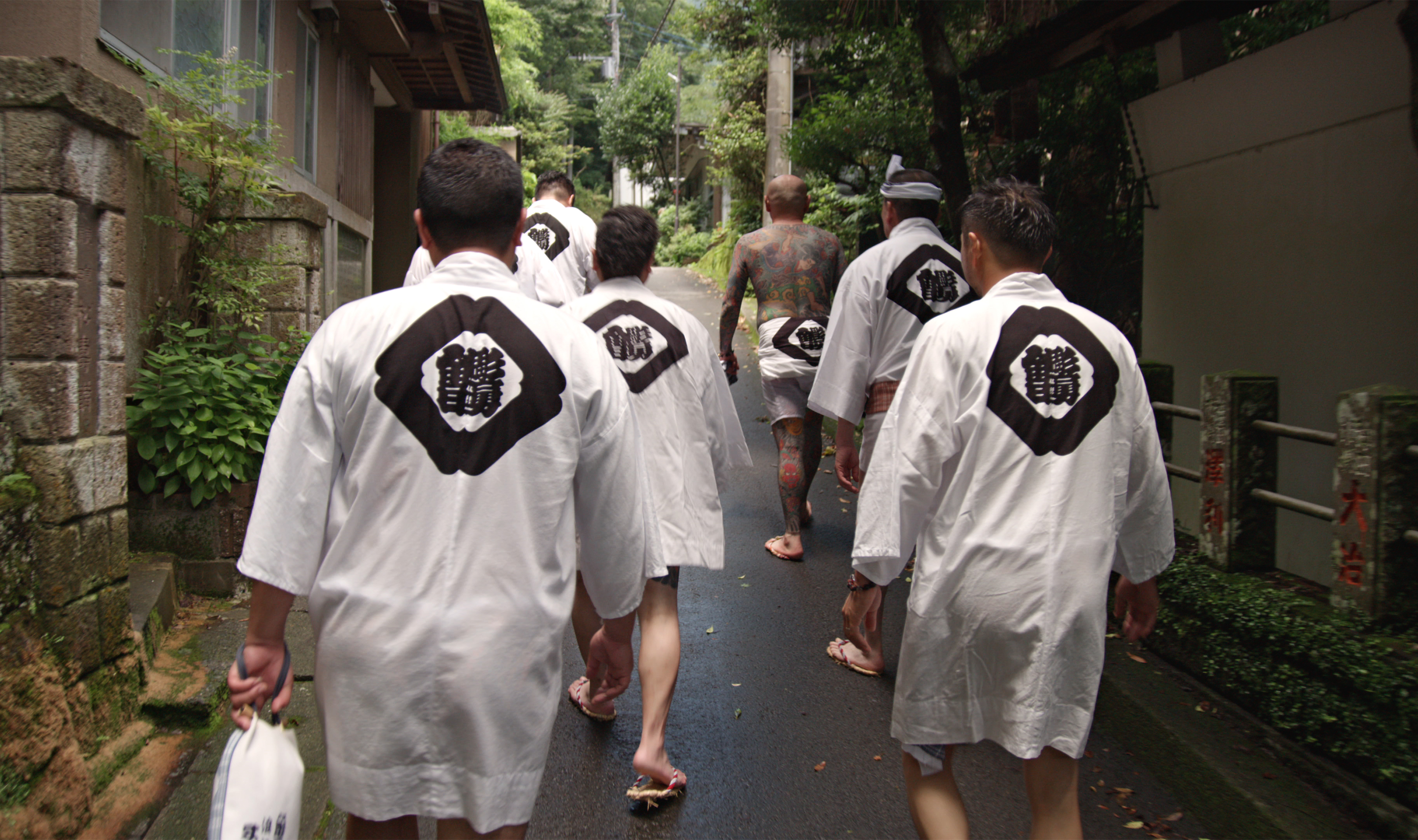
The peak of the Choyukai pilgrimage ascent is Mt. Oyama (Mt. Big Mountain) in Kanagawa Prefecture. Both Mt. Oyama and Mt. Fuji could be seen from Tokyo on a clear day – especially before the existence of skyscrapers – and it was believed that the god of Mt. Oyama is the father of the god of the daughter, Mt. Fuji.
These days, the journey from Tokyo to Mt. Oyama, which would normally take two to three days, has been consolidated to under two hours with the help of electric air-conditioned trains and cable cars. For one special day out of the year, the Choyukai all make this journey from different areas across Japan and assemble at a traveler’s inn that was owned by Satoh.
At the beginning of the 2019 Choyukai pilgrimage, the sendōshi led the group of about 80 pilgrims to a waterfall to perform takigyō, a form of waterfall purification ritual.
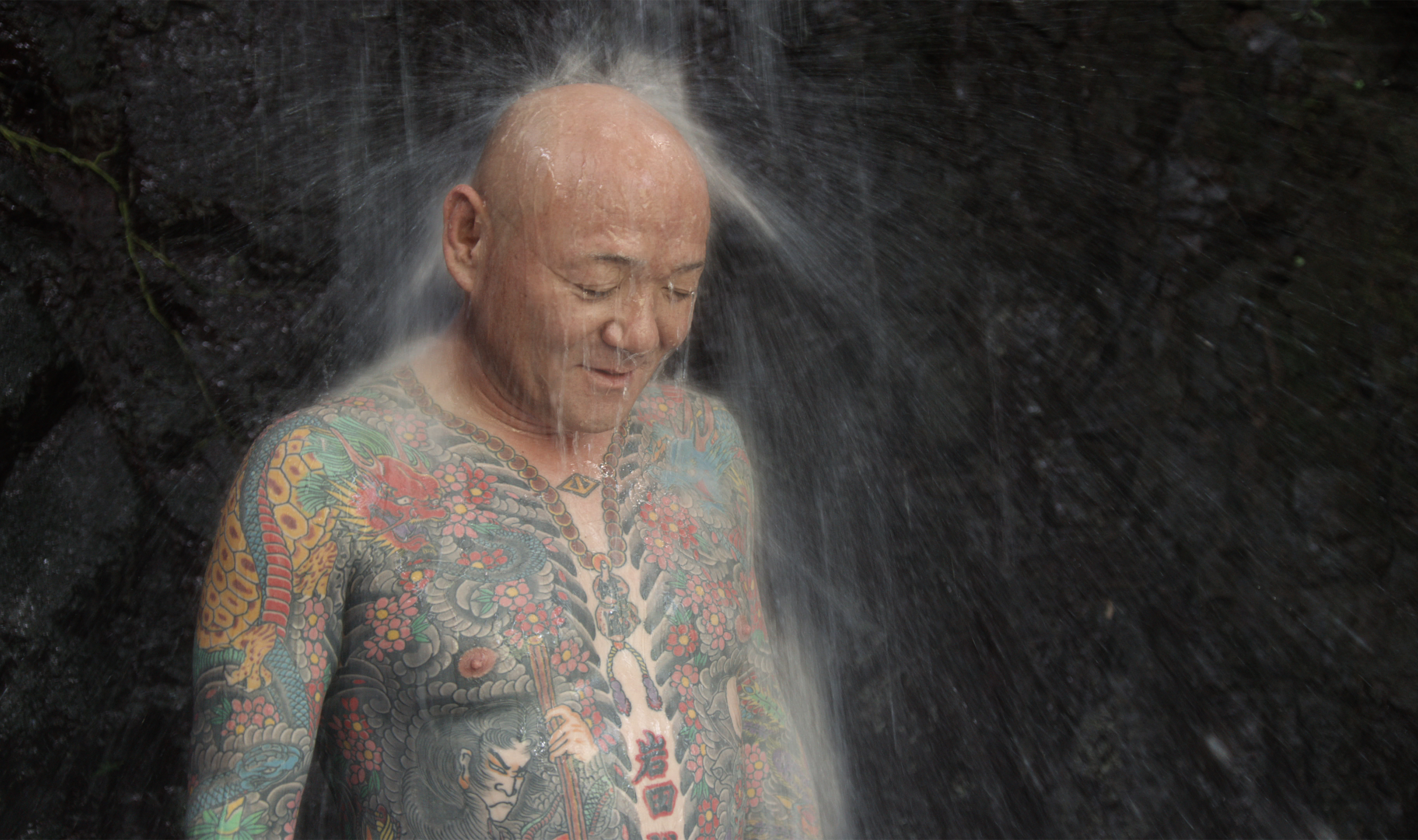
Images of pilgrimages as something dry and rigid where people aren’t allowed to have any fun is a concept foreign to most pilgrimage goers in Japan. There are certainly serious moments, such as the purification rituals with the shrine priest. But on the whole, it is an excuse for people to get together and experience something as one, focusing on appreciation for one’s communities. The Choyukai pilgrims that VICE World News followed made their way up the mountain, sweaty and mostly naked, slamming back beers, chain smoking cigarettes, and holding back tears laughing about memories of past pilgrimages.
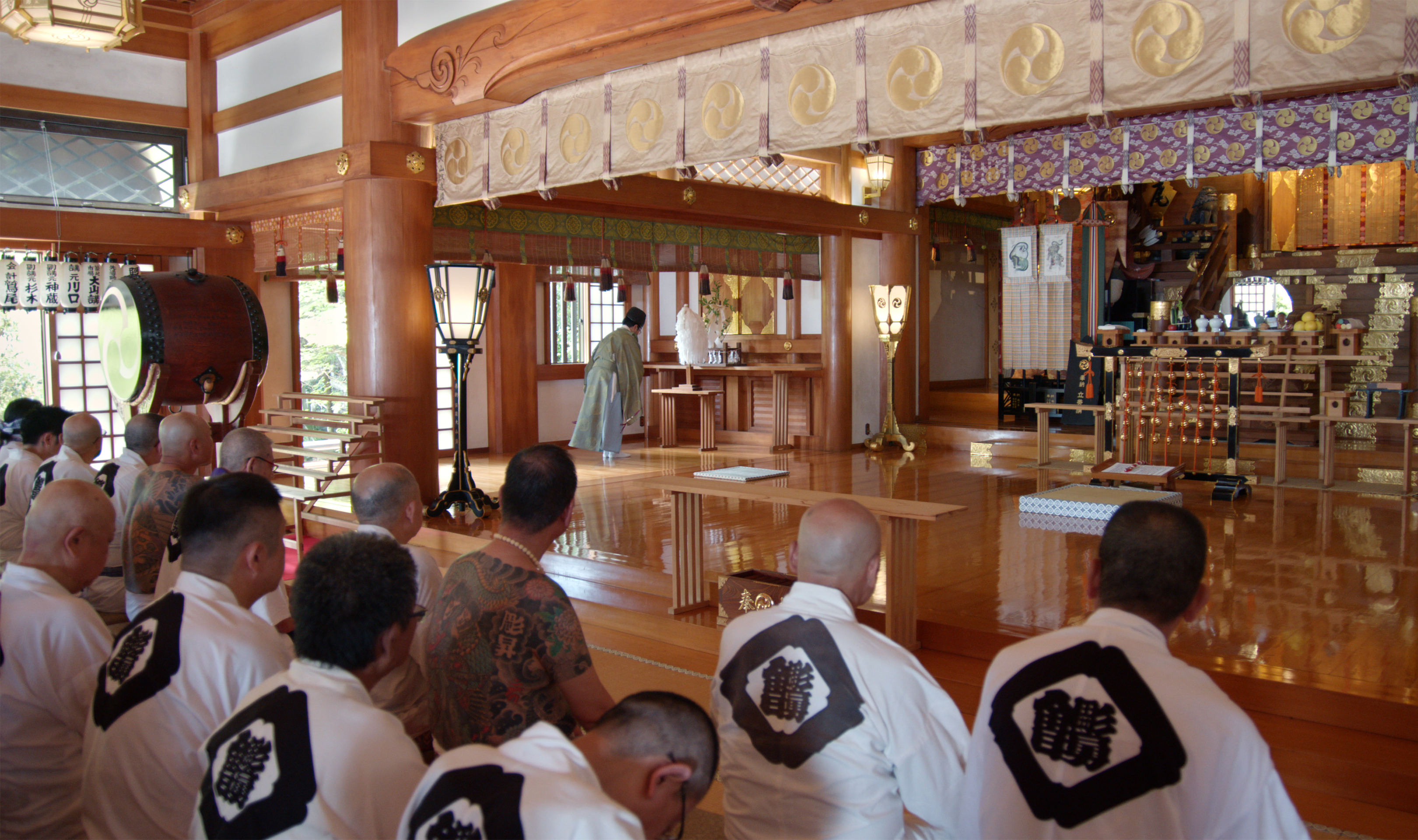
The climax of the pilgrimage is at the main shrine of Oyama, the Oyama Afuri Shrine, where the pilgrims are blessed by a Shinto priest. In this ritual, the gods are believed to come down and visit the pilgrims.
For the Choyukai, it is a way for them to show off their tattoos to the gods and honor their tattoos.
This is followed by a ritual drinking of sake offered by shrine maidens. When the ceremony is complete, the pilgrims descend back down to the foot of the mountain to the inn, where they hold a big feast with plenty of sake in a naorai celebration, which is a banquet where humans invite the gods and spirits down, to drink and dine with them.
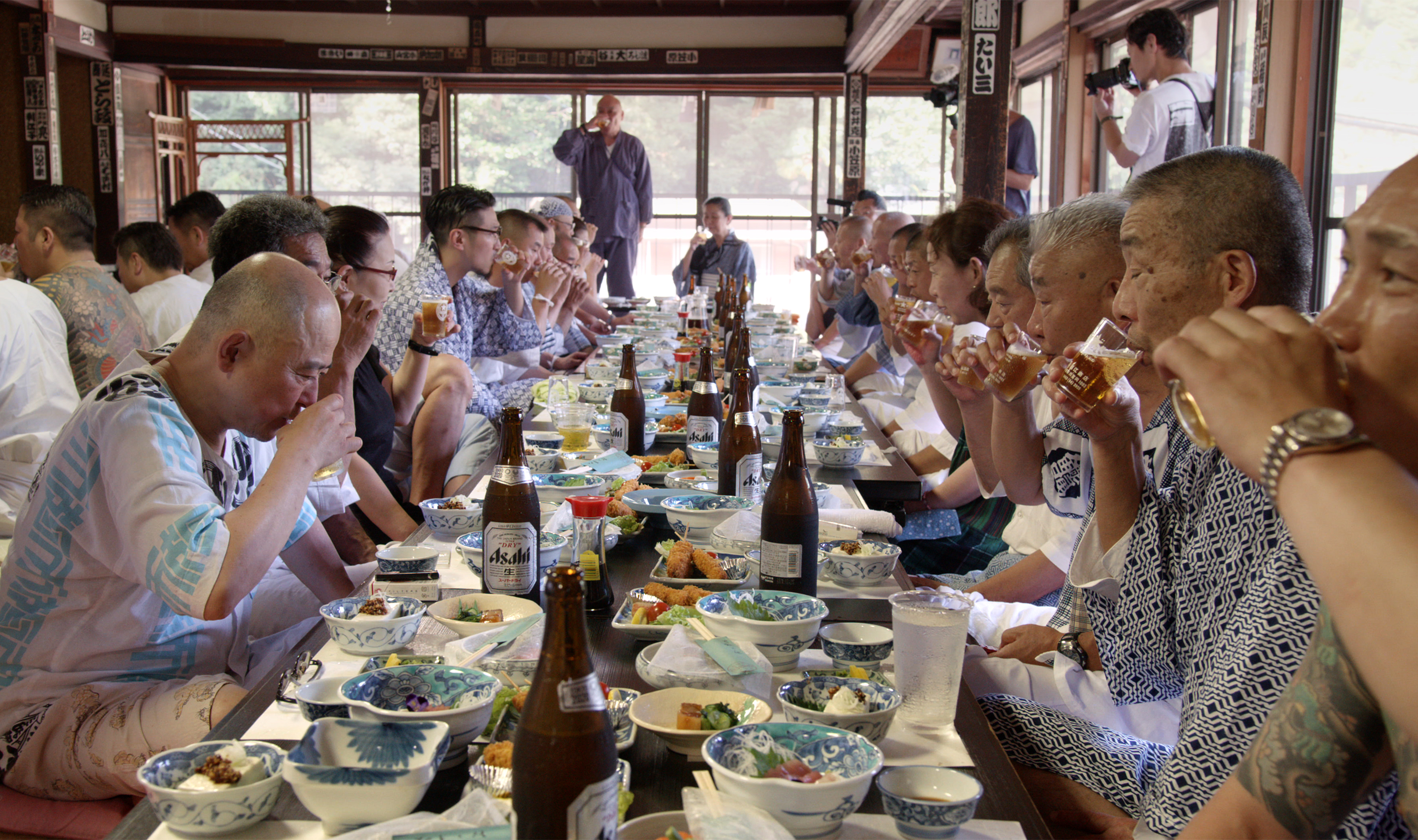
Perhaps as a result of direct experience, people in Oyama seem to never have developed the allergic reaction to tattoos that is common elsewhere in Japan.
Satoh made a point of exposing his grandchildren to the Choyukai so that they could see firsthand, from a young age, that horimono are not scary.
“In Oyama, having contact with these people that come once a year, we don’t think that tattoos are a bad thing,” said Meguro Kunihiko, one of the shrine priests who leads the purification rituals with the Choyukai every year.
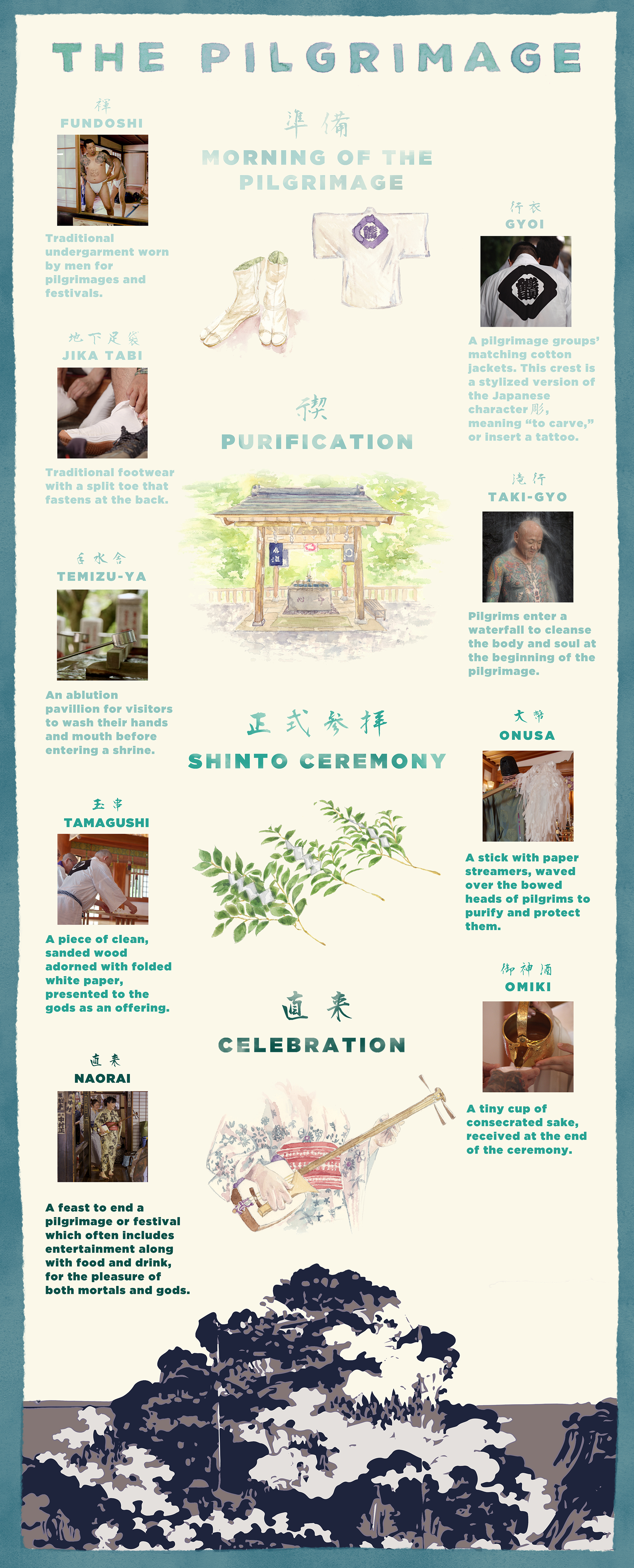
In an age where work is increasingly moving towards office jobs and individuals are spending more and more time separated from one another on computers, festivals and pilgrimages are losing participants. People acknowledge and appreciate the existence of these traditions, but compared to older generations, few engage in them themselves.
“Today, festivals have become something people observe from the outside as audience members, rather than actually participating in themselves,” laments Meguro.
“Experiencing culture in a museum or exhibition is passive,” he added. “What we’re losing, increasingly, is first-hand experience, truly being a part of something. The Oyama pilgrimage provides that. This is the real deal.”
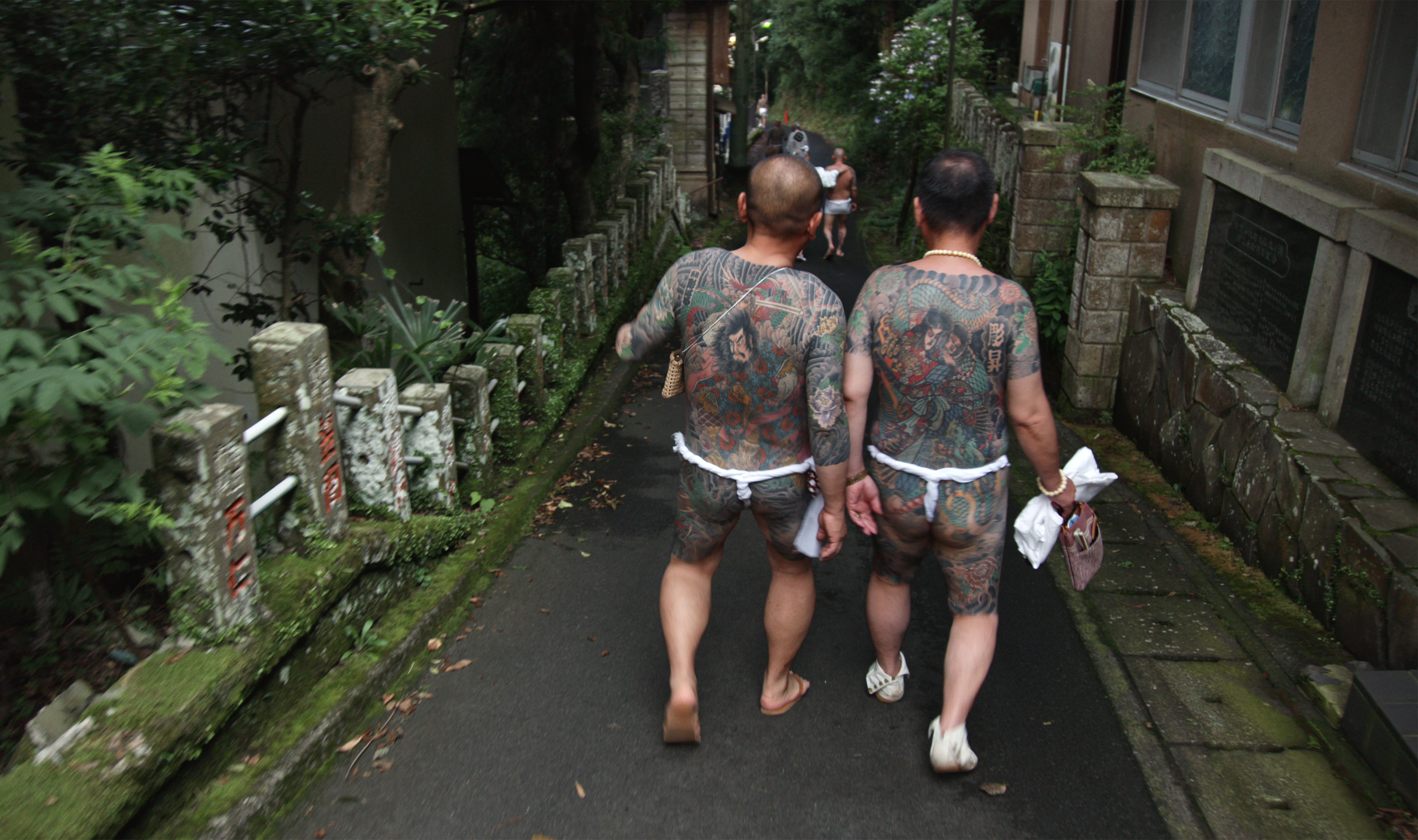
The Choyukai pilgrimage has continued unbroken for over a century – until this year when the pandemic hit. But 2020 was a year that brought to the Choyukai a more personal tragedy: Satoh, who hosted the annual pilgrimage and continued a role that his family has passed down for centuries, passed away after a long battle with cancer. The pilgrimage that VICE World News filmed was his last.
“Why is a Japanese custom that has remained since the Edo period not seen as such? [Tattooing] is such a painful experience, it’s understandable for people not to know why someone would go through such a thing,” said Satoh, a year before his death. “But for someone to go through that pain, and to be able to raise their own spirits because of it – this is a precious part of Japanese culture. To carry on this culture is so important.”
His goal was for Japanese society to accept the art of horimono. “I really want to change this,” he said.
